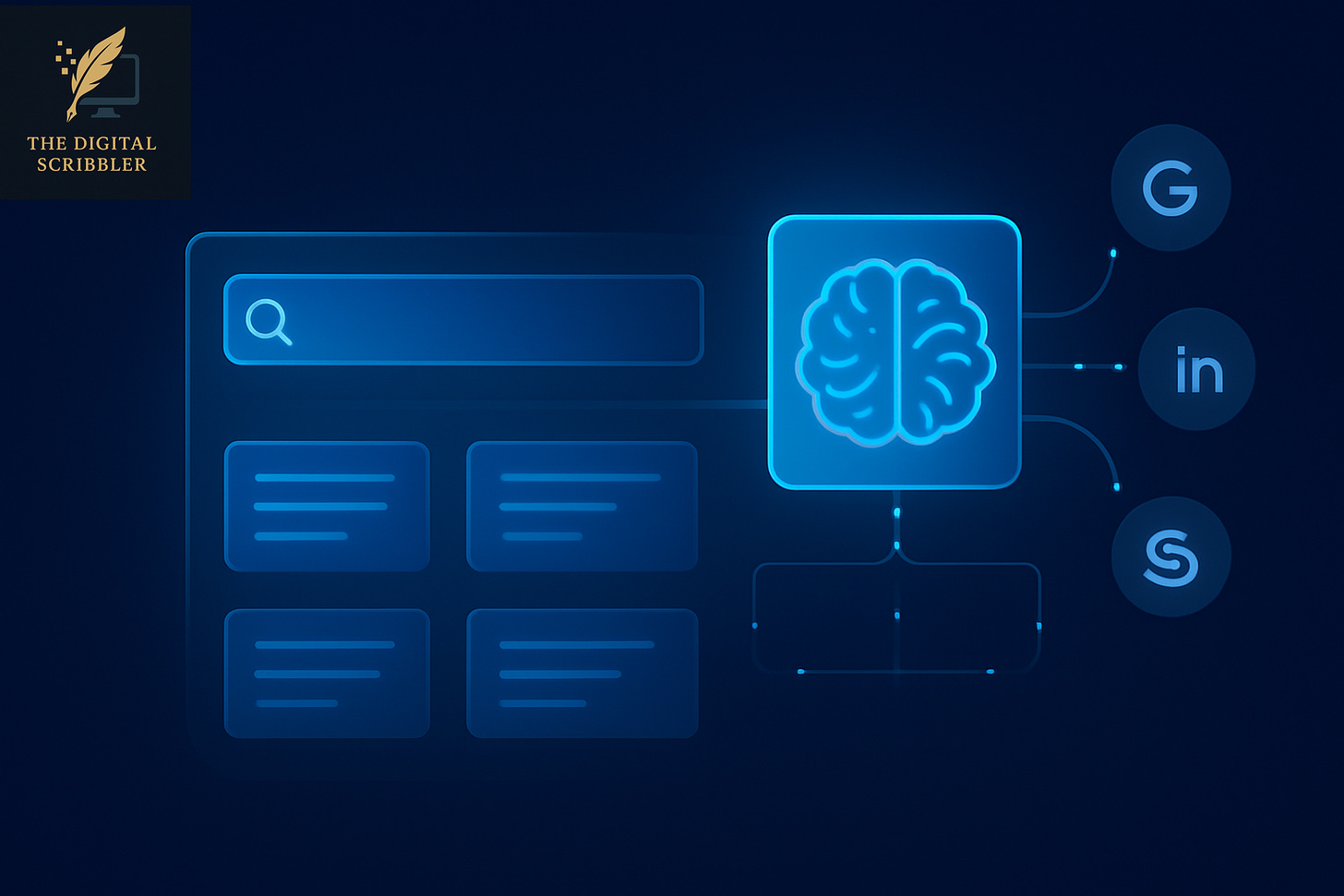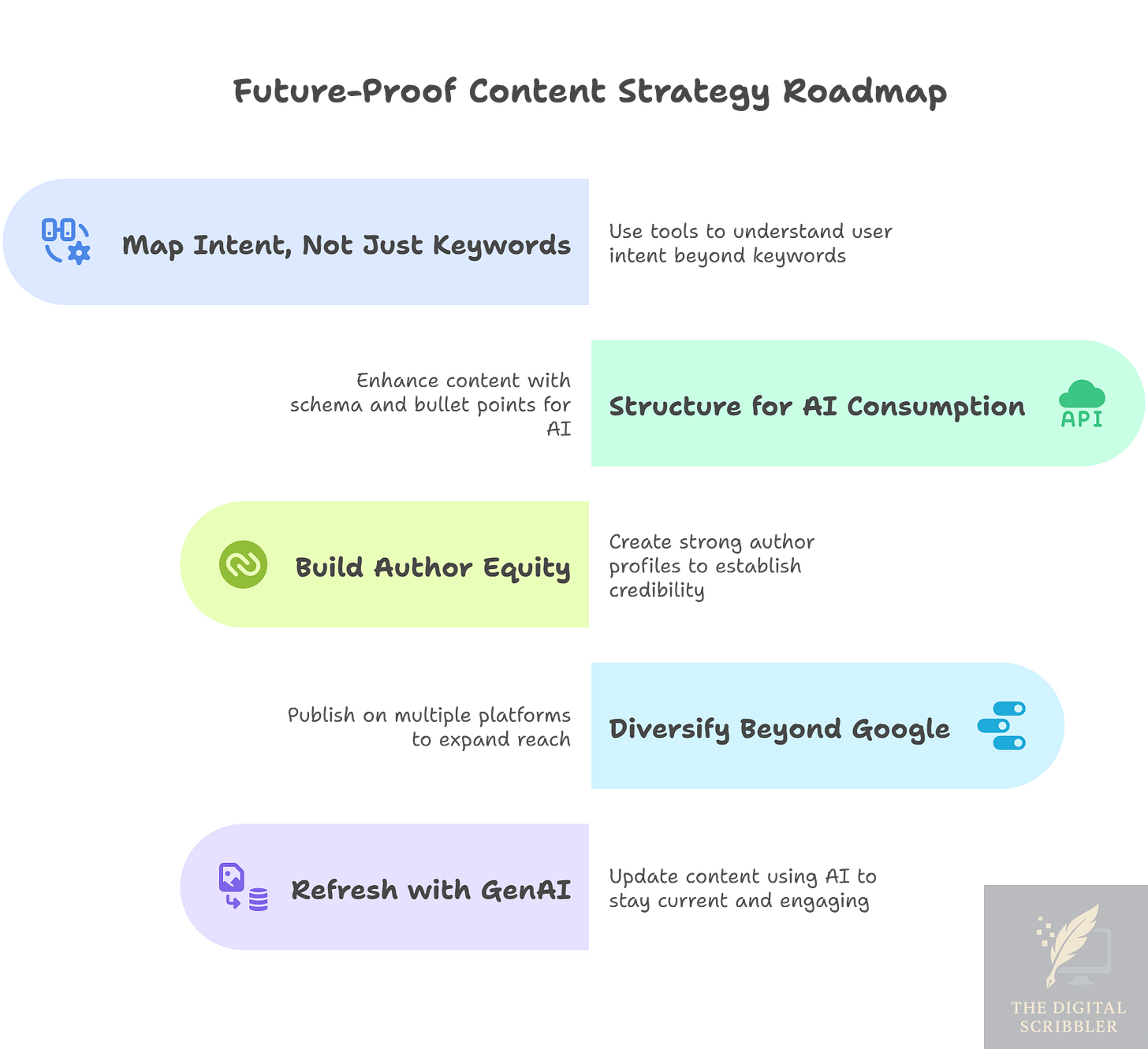Beyond Keywords: How Search Intent and AI Will Redefine Content in 2026
Keywords are fading. Intent is rising. Discover how AI, EEAT, and multi-platform discovery will reshape SEO in 2026—and how your brand can stay ahead.
Introduction: The Shift Nobody Can Ignore
If 2025 was the year AI rewrote the SEO rulebook, then 2026 will be the year search itself becomes intent-native.
Google’s AI Overviews, ChatGPT-style assistants, and the rise of zero-click answers have changed how people discover information. What matters now is no longer what words they type in—but what problem they want solved.
As marketers, writers, and businesses, our challenge is to
future-proof our content for an ecosystem where AI is the first filter, and humans are the final judges.
Why Keywords Are No Longer Enough
Here’s what the latest data is showing:
Zero-click searches now make up 65% of all Google queries
AI Overviews already appear in 13% of U.S. searches, and Google has confirmed plans to scale this globally in 2026
According to Deloitte’s TMT 2025 Predictions Report, by 2025, 25% of enterprises using GenAI are expected to deploy AI Agents—projected to grow to 50% by 2027.
The message is loud and clear:
Keywords may still get your content indexed, but only intent will keep it visible in 2026.
What Search in 2026 Will Look Like
Here’s how search will evolve next year (and how you should prepare):
1. AI as the Default Research Layer
By 2026, most users won’t “Google and scroll.” They’ll “ask and skim.”
Expect more AI summaries before links.
Content that is structured, sourced, and credible will feed these summaries.
2. Authority Will Outrank Volume
EEAT (Experience, Expertise, Authoritativeness, Trust) will matter more than publishing 20 shallow posts a month.
Verified author bios, industry credentials, and trusted backlinks will dominate.
3. Micro-Intent Targeting Will Drive Visibility
Instead of broad keywords, AI models will prioritize niche, contextual intent, like:
“How does a SaaS startup in Dubai use HubSpot AI?”
If your content solves specific problems, you’ll be surfaced more often.
4. Content Distribution Will Outgrow Google
In 2026, content discovery won’t stop at Google.
ChatGPT Plugins, Perplexity integrations, and multi-modal AI assistants will become traffic sources.
Content marketers need to optimize for AI feeds, not just search engines.
How to Build a Future-Proof Content Strategy for 2026
Here’s a practical roadmap:
Step 1 – Map Intent, Not Just Keywords
Use tools like SEMrush & Ahrefs, but don’t stop at volume—study queries AI assistants generate.Step 2 – Structure for AI Consumption
Add schema, bullet points, FAQs, and citations to increase the chance of being surfaced in AI summaries.Step 3 – Build Author Equity
Create strong author profiles (LinkedIn, Substack, industry publications). Algorithms will care about “who wrote it” more than ever.Step 4 – Diversify Beyond Google
Publish on Substack, Medium, LinkedIn, and AI-optimized feeds. Make your content travel, not wait.Step 5 – Refresh with GenAI
Use Generative AI as a co-pilot: update older posts with new stats, make them conversational, and preemptively answer FAQs readers might ask AI assistants.
Conclusion: From Traffic to Trust
2026 isn’t just about “ranking higher”—it’s about being the most trusted answer when AI filters through billions of options.
If you build content around search intent, EEAT signals, and multi-platform discovery, you won’t just survive the next wave of SEO changes—you’ll lead it.
If you found this piece useful, check out more posts on mannkizubani.substack.com — and don’t forget to subscribe to get weekly insights on content, AI, and the future of digital marketing.
Let’s build future-ready strategies together. 🚀


